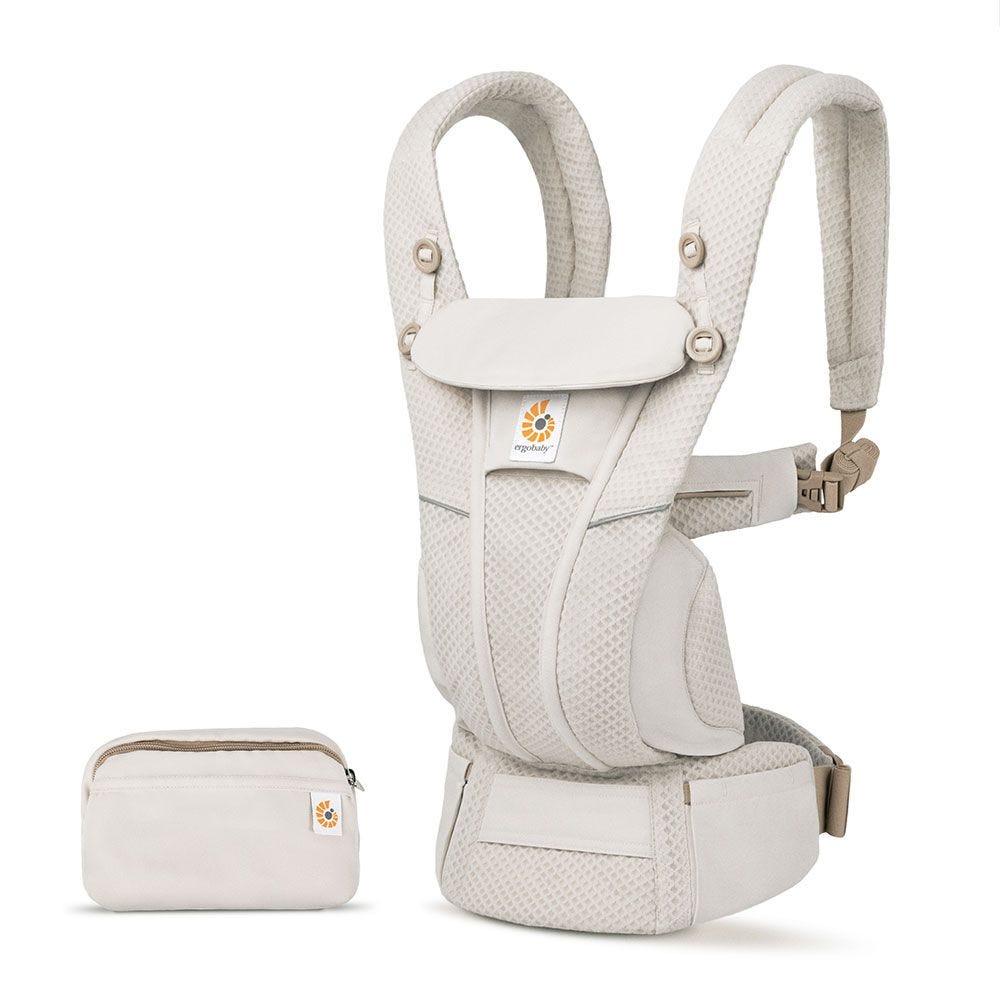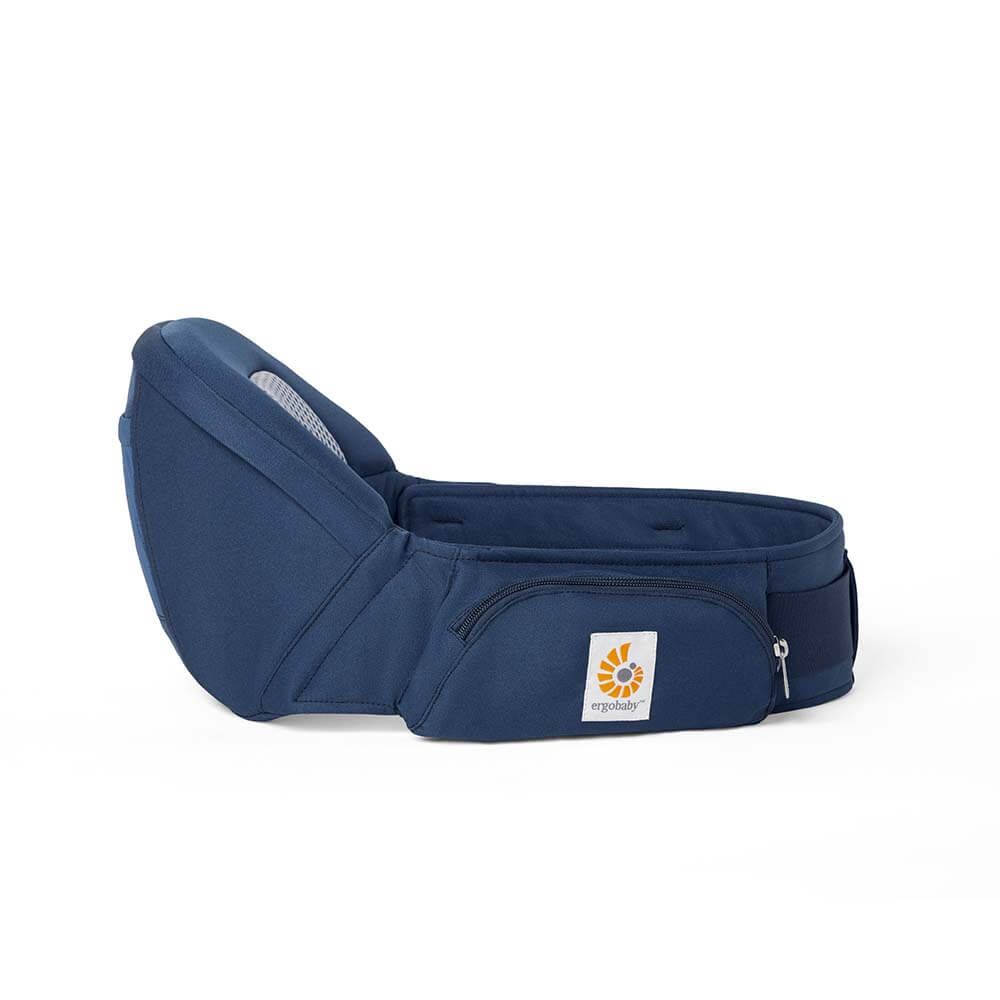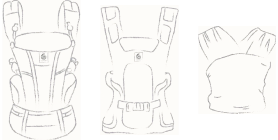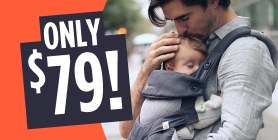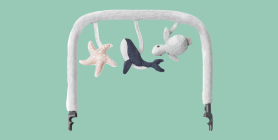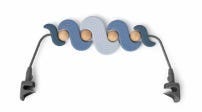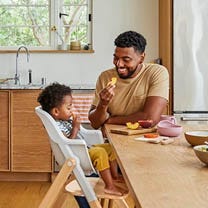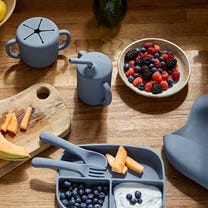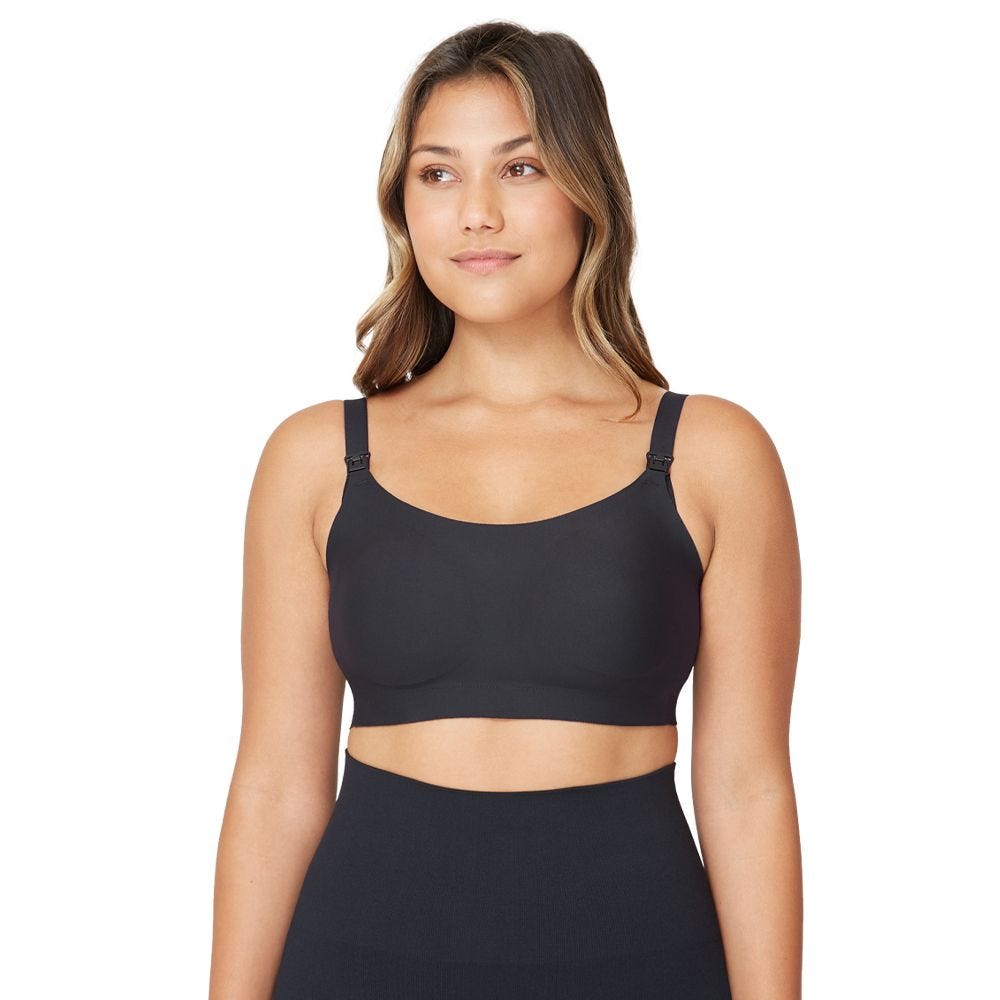Baby and Child Safety Month
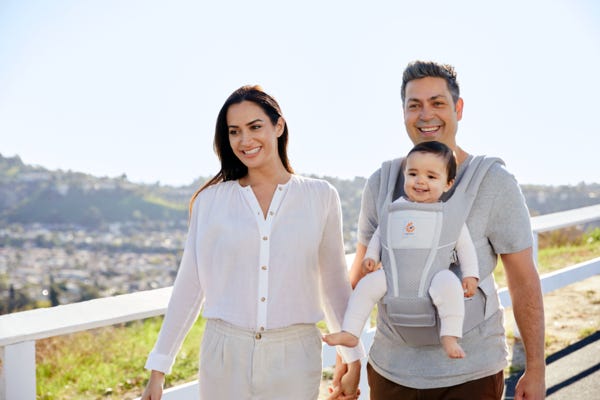
September is Baby Safety Month, so we’re here to share some of the official JPMA resources for all the child product safety essentials.
Safe at Home
Home should always be a place that the whole family feels safe, secure, and loved. Babyproofing your home is truly an ongoing process. They will grow, develop, and eventually figure out how to open the baby proof locks. Keep a close eye out for ways you can make your home a safe place for babies of all ages!
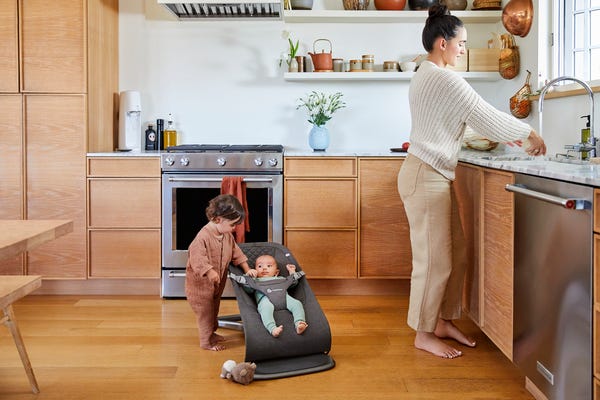 Here are a few of the JPMA Safety Basics:
Here are a few of the JPMA Safety Basics:
- Choose and use age and developmentally appropriate products as outlined by the manufacturer.
- For the safest product use, be sure to always read and follow all manufacturer’s instructions, recommendations for use, and warning labels.
- Monitor your child’s growth and development. Discontinue using a product as your baby reaches the age or development limits defined by the manufacturer.
- Ideally, the best time to baby-proof is early in your pregnancy before you register so you can include needed baby safety products on your registry list.
- The best way to baby-proof? Get down on your hands and knees and think like a baby! This is a great activity for both mom and dad since males and females tend to look and inspect different aspects of the home and infant safety measures in general.
- Take care of all the obvious hazards such as exposed electrical sockets and blind cords, but be on the lookout for those not-so-obvious items like empty dishwashers, hanging tablecloths that can be easily pulled down, and poisonous plants.
- Babies at any age are curious and want to touch, feel, lick, smell, and listen to anything and everything they can get their little hands on. Your job is to make him or her part of your home as much as possible. After all, this new addition is not a temporary guest and should be able to safely explore every room in your home.
- Consider child-proofing an ongoing process. Monitor your child's growth and development and always try to stay one step ahead. For example, don't wait until your baby starts crawling to put up stairway gates. Install them in advance so the entire family gets used to them and baby doesn't associate his new-found milestone with barriers.
- If you are preparing for baby #2 or #3, don't underestimate your "seasoned" approach to baby-proofing from the first time around. In fact, having an older sibling creates additional hazards you should be aware of like small parts from toys and your toddlers ability to open doors, potty lids, and cabinets now.
- Be sure to safeguard alternative homes your child may visit frequently, such as grandparent or babysitter homes.
SHOP Ergobaby Bouncer
Bathroom Safety
- Collect all necessary bathing materials before bringing the baby into the bathroom.
- NEVER leave your baby unattended during bath time.
- Never add water to the tub while your baby is in it.
- Always check the water temperature before placing your child in the bath tub or bath seat.
- When your child is old enough to turn the faucets, teach him to start the cold water before the hot.
- If using a baby bath seat, never lift the product with baby in it and position the bath seat in the tub so baby cannot reach the faucet or spout.
- Be sure to discontinue use of a product if it is damaged, broken or disassembled.
- If the bath seat moves or tips while your child is in it, discontinue use.
- Bath rings should ONLY be used with children who are capable of sitting upright unassisted.
- Empty the tub completely immediately after each use.
- If you have to leave the bathroom, take the baby with you. A baby can drown in as little as one inch of water.
- Install no-slip strips on the bottom of the bathtub.
- Never use a bath seat on textured or non-skid surfaces unless the manufacturer’s instructions specifically state the seat is intended for such surfaces.
- Put a cushioned cover over the water faucet so your child won’t be hurt if he bumps his head against it.
- Get in the habit of closing the lid of the toilet and get a toilet lid lock. A curious toddler who tries to play in the water can lose his balance and fall in.
- Medicine, bleach, and drain cleaner should be kept out of baby’s reach. Childproof safety locks for cabinets can be helpful.
- Be sure to properly childproof the entire bathroom (not just the bathtub) to ensure an overall safe experience when utilizing all of the facilities.
- Look for the JPMA Certification Seal on bath seats, bath tubs, and bathers.
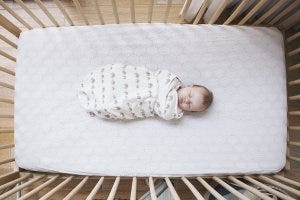 Sleep Safety
Sleep Safety
In June 2022, the American Academy of Pediatrics (AAP) released updated guidelines that state the following:
Babies should only be placed to sleep alone, on their back in a crib, bassinet, play yard or bedside sleeper with a firm mattress covered in a snug fitted sheet. No other items, including soft toys, pillows, blankets, or other bedding should be placed in the sleep space.
Baby Monitors
There isn’t one monitor that is better than the other, it all comes down to personal preference. Once you find the monitor that is right for your family, be sure to always keep your baby monitor out of your toddlers reach.
Follow these guidelines to help create a safe and sound zone for baby:
- Immediately check the location of all monitors and other products with electric cords, included those mounted on the wall, to make sure cords are out of your child's reach.
- Place cords at least three feet away from any part of the crib, bassinet, play yard, or other safe sleep environment. Be aware that what is a safe distance today will change as the baby grows.
- Never position a monitor inside or on the edge of a crib.
Napping in a Metro +
Sleeping in Baby Carriers
Playtime
Playtime is special whether you're at home, outside, or at a friend's house. Bonding with your baby close to you is crucial, but so is play! Here are a few important safety basics when baby isn't in your arms:
- NEVER leave a baby unattended. It is important to stay in the same room as baby
- NEVER place entertainment products on beds, sofas, or other soft surfaces.
- ALWAYS secure the restraining straps and never leave a baby when straps are loose or undone.
- To avoid tip-over, only use bouncers and activity centers on flat, level surfaces.
- NEVER place the infant swing, activity center or bouncer near windows, stairs, draperies, blinds, TV’s, plants, fireplaces or decorative accessories with long cords that baby could reach.
- Be sure to follow manufacturer’s recommended age, weight, and height for infant swings, bouncers, and activity centers.
- Discontinue use when your baby outgrows the manufacturers recommended age, height, weight or developmental limits.
Safe Travel
Car Seats
For starters, make sure you purchase a car seat that is appropriate for the age and stage of development for your little one. All car seats that are manufactured today are designed with the highest safety standards set by the federal government. So it’s up to you to use it correctly!
You have options to buy car seats for infants and then larger ones that will have both rear and forward face, or you can choose convertible car seats that do it all. Read the instructions thoroughly and carefully so your child is safe and secure in your car.
Here’s a few general rules:
- Children should ride rear-facing until they reach the maximum rear-facing weight or height allowed by the instructions.
- Children who exceed rear-facing limits should ride in forward-facing car seats with a harness.
- Children who exceed the forward-facing harness limits should ride in booster seats until seat belts alone fit correctly.
- Follow the car seat instructions for proper use and your state law and register your car seat with the manufacturer.
- The back seat is the safest place for children under 13 to ride.
- Do not use a car seat or booster car seat that:
- is second-hand, especially if it is beyond its expiration date.
- has ever been involved in a crash.
- is missing the manufacturer's label showing the name of the manufacturer, model number, and date of manufacture.
- Register your car seat! Car seats could be recalled for child safety reasons, and you must register your car seat to be reached in the event of a recall. Call the manufacturer customer service line listed on your car seat labels or visit the manufacturer's website to register.
- Car seats expire! Check your labels and instructions for the expiration date.
- Ensure everyone in the car is buckled up! Unrestrained passengers can be thrown around in a sudden stop or crash, possibly being injured and/or injuring others in the car.
- Prevent Heatstroke!
- Never leave your child alone in a car, not even during a quick trip to the store.
- Keep car doors and trunks locked and keep key fobs out of reach.
- Create reminders like placing a stuffed animal or other memento in your child's car seat when it's empty and move the toy to the front seat as a visual reminder when your child is in the back seat.
- Take action. If you see a child alone in a car, call 911.
- Air Travel - Taking your child's car seat along when traveling is recommended.
- Most car seats with harnesses are approved for use in an aircraft, with a label that states "This Restraint is Certified for Use in Motor Vehicles and Aircraft."
- Booster seats are labeled, "This Restraint is Not Certified for Use in Aircraft."
- Pack your booster car seat as luggage so you have it at your destination.
Strollers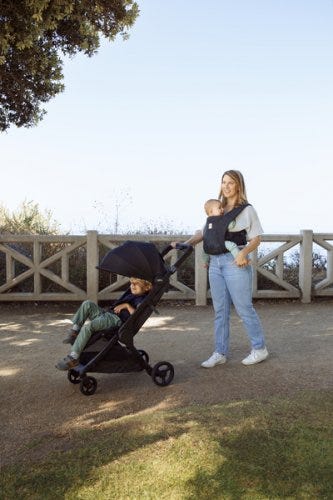
- Buckle up baby every time — even just for short strolls — and use restraints properly.
- Keep baby’s hands clear when unfolding and folding strollers.
- Use storage baskets and keep handles free of purses and bags so the stroller doesn’t tip over.
- Apply brakes when stationary to prevent a stroller from rolling away.
- Be mindful about what you put in the parent accessory trays, such as hot coffee, so it doesn’t accidentally spill onto baby and cause burns or bruises.
SHOP Compact Strollers
Baby Carriers
Choose a carrier that’s right for your family and read all instructions to make sure you’re using and wearing properly.
- Keep baby’s face visible and kissable.
- Make sure all attachments are secured, tighten everything and don’t forget to hook clasps.
- Never cook over a hot surface with a child in a carrier because it puts them at risk for accidental burns.
- Always follow manufacturer’s instructions, warning labels and recommendations for age, height and weight requirements.
Browse Baby Carriers
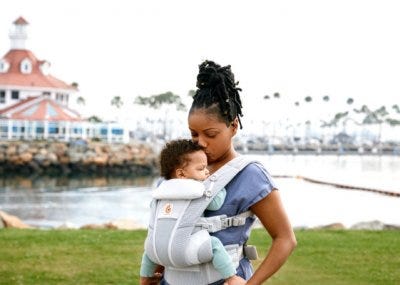 Buying Second Hand
Buying Second Hand
Baby products can really add up in cost! Especially when you have multiples. Many families choose to go the second hand route and it’s important to understand that while they are pros, there are also risks.
Products that aren’t recently manufactured may not meet current baby safety standards. If you’re choosing to go the hand-me-down route, here’s a few tips to make sure you’re keeping your little ones safe:
- Make sure the manufacturer's instructions and labeling are still intact and legible. Check for recalls before you bring it home.
- If you’re getting a second-hand crib or bassinet, make sure to check that it meets the current safety standards such as crib slat width and corner post height. Check that it’s not missing any parts and none of the pieces are at risk of breaking.
- Read Instructions and Warnings – For the safest product use, be sure to always read and follow all manufacturers’ instructions and warning labels.
- Inspection During Use – Don’t forget to frequently inspect products for missing hardware, loose threads and strings, holes, and tears.
- Discontinue Use – Monitor your child’s growth and development. Discontinue using a product as your baby reaches the limits defined by the manufacturer.
One baby product that IS safe for extended use are Ergobaby carriers! Ergobaby products were designed to carry and comfort the most precious cargo of all. With this in mind, we use exceptional materials and workmanship to create products that families trust day after day, and in many cases, baby after baby. We strive to exceed your expectations not only for comfort and ergonomics, but also quality and durability, and stand behind all our products with outstanding customer service and warranties.
If you’re looking for a high quality carrier at a discounted price, you can purchase through Everlove by Ergobaby.
Browse Baby Carriers
For the most up-to-date child product safety recommendations, visit jpma.org.

 Here are a few of the JPMA Safety Basics:
Here are a few of the JPMA Safety Basics:
 Sleep Safety
Sleep Safety
 Buying Second Hand
Buying Second Hand
